 |
I received 85 credits on The Sci Fi Sounds Quiz How much of a Sci-Fi geek are you? |
| Take the Sci-Fi Movie Quiz cheap digital camera | |
Thanks to David for tipping me to this.
Americlecticintellectica
 |
I received 85 credits on The Sci Fi Sounds Quiz How much of a Sci-Fi geek are you? |
| Take the Sci-Fi Movie Quiz cheap digital camera | |
Thanks to David for tipping me to this.
At first I was going to confine this blog-a-thon to screenwriting. “Write about a movie whose script was good but not great, and explain how you would improve it” were the original instructions. Then I thought, why not extend it to all creative endeavors? And so I shall.
 No easy targets please; I don’t want to hear how Meatballs III could have benefited from the addition of some talking animals. Of course it could have benefited from the addition of some talking animals. Any change would have been an improvement. (Except for casting someone other than Patrick Dempsey in the lead role, now that he’s all hot and stuff.)
No easy targets please; I don’t want to hear how Meatballs III could have benefited from the addition of some talking animals. Of course it could have benefited from the addition of some talking animals. Any change would have been an improvement. (Except for casting someone other than Patrick Dempsey in the lead role, now that he’s all hot and stuff.)
Also, no mere technical problems please. It’s not very interesting to hear that you would take better care to keep the boom mike out of the shot, or aim the camera away from the shadow of the helicopter it’s in. And don’t simply catalog the faults of an otherwise good work of art (as I have done on this blog from time to time). Anyone can criticize; only a few can correct.
No, please stick to movies (et al.) that are already pretty good and require only some creative input from you to realize their full potential.
For example:
One day many years ago I turned on the TV in the middle of a World War II spy thriller, 36 Hours, starring James Garner and Rod Taylor. (Spoilers follow.) James Garner wakes up in an American army hospital five years after the war; he’s been in a coma. He’s delighted to hear that the Allies won. The D-Day invasion, which was still in the planning stages when his coma began, was a big success. His doctors and nurses chat him up on the subject, testing his memory.
In fact the hospital and its staff, the newspaper showing the date to be 1950, even James Garner’s greying temples, are all an elaborate ruse by the Germans. The war is still on. James Garner had been drugged and abducted and is being tricked into revealing secrets about the Normandy invasion, which the Germans know is imminent. We learn this about twenty minutes or so from the point where I started watching. James Garner realizes it himself soon after — and then must continue to play dumb and plant misinformation to counter the secrets that (he realizes with horror) he’s spilled. Very suspenseful.
Those of you who know the film can predict what’s coming. Years later I saw it again, this time from the beginning, and I saw nearly a full half hour of setup and exposition I hadn’t seen before — absolutely none of which was needed to appreciate the remainder of the film. In that first half hour we see that James Garner is a dedicated Army intelligence officer. We see him come by the D-Day knowledge that will later be of such interest to his interlocutors. We see him get a seemingly inconsequential paper cut which is what tips him off later to the fact that not so much time has passed. And then we see him abducted and the German ruse put into effect.
In my first creative writing class in high school, my teacher, Mr. San, taught that after writing a story, we should throw away the first act, because it will only ever contain plodding exposition that the reader would prefer to find out along the way anyway. That should have been done with 36 Hours. There’s nothing in the first half hour that we can’t infer from the rest of the film; and the abduction of an Army intelligence officer is a much smaller first-act dramatic development than the whopping revelation that everything we’ve seen so far has been a lie.
One such article, “‘Drilling Up’ — Some Look to Space for Energy,” appeared recently from the Associated Press. It describes a joint effort between the U.S. Department of Defense and the island nation of Palau to demonstrate the feasibility of receiving power from an orbiting satellite. The satellite will collect solar energy during its ninety-minute orbit, storing it up in order to beam it down to a receiver on Palau as it passes overhead. It will send a million watts of power during a five-minute window.
The article touts it as a forward-thinking alternative-energy project that will benefit at first the citizens of Palau and later the world. But nowhere in the article, or indeed in other articles of this ilk, are any red flags raised about placing in the Pentagon’s hands a solar death ray that can incinerate targets from orbit.
Now I don’t wish to impugn the Pentagon’s motives. I am sure their ambitions have everything to do with altruistically improving the standard of living for every person on earth and nothing to do with a lust for high-tech war toys. But if you or I built something that could store up three hundred million joules of energy and then deliver it all in a five-minute burst to any spot on earth, you could forgive the people of the world harboring a little concern.
You’d think that science writers could follow the technological implications of the things they write about. Hell, for this story all they need to do is watch some James Bond.
I remember some national magazine or other publishing a humorous “interview” with Yoda in the summer of 1980, when The Empire Strikes Back was new and so was Yoda. Yoda answered questions on the topics of the day in his cockeyed syntax. (I remember the piece closing with Yoda asking, “Any more questions, have you?” and the interviewer responding, “Yes: who shot J.R.?“) Among the subjects covered in the interview was Superman the Movie — specifically, its opening credits, in which spectacularly animated names whoosh though interstellar space. Yoda said something like, “Oh yes, flying letter storms. Get them all the time on Dagobah, we do.”
That the article should touch on the opening credits — the credits — of another, unrelated movie more than a year and a half old, at a time when Empire was eclipsing everything else in the pop culture landscape, should give you some idea of the impression that Superman‘s credits made. They nearly upstaged the entire movie that followed, and decades later it’s those credits, set to John Williams’ unabashedly rousing march, that hold up better than most of the rest of the film.
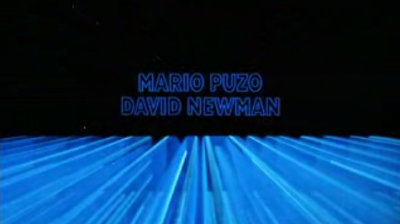
That was almost all I had on the subject of opening credits until I mentioned to my wife Andrea that I would be participating in this blog-a-thon. Andrea, who routinely professes ignorance of and disinterest in film lore, proceeded to rattle off a series of terrific suggestions that I am embarrassed not to have come up with myself. So herewith, a few words on a few more memorable opening credits.
No discussion of memorable opening credits would be complete without mentioning the James Bond series. (Not that I’m aiming for anything like completeness.) The first film, Dr. No, doesn’t count, but it’s interesting in the way it doesn’t count: its credits are jazzy and abstract, which might have set the tone for the whole series if it had begun in the late 50’s rather than in the early 60’s. But Camelot and the Playboy era rode up alongside the James Bond series and the tone became somewhat different. The opening credits for the next film, From Russia With Love, created the template for the rest of the films: an imperfectly seen, mostly unclad beauty writhing athletically on screen. Later films, most of them with their title sequences designed by Maurice Binder (who had done the first two too) had variations on this theme: female silhouettes dancing and multiplying across the screen. When handguns appeared, the formula was complete. The pinnacle must have been The Spy Who Loved Me: Roger Moore and some nude women in silhouette, performing gymnastics on the silhouettes of handguns.
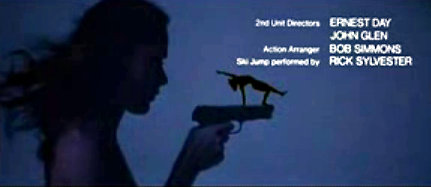
Maurice Binder is long gone, alas, but the latest Bond credits, for Casino Royale, are superb: paying homage to the old formula while modernizing with some (non-obnoxious) computer graphics and a considerably more serious tone emphasizing the consequences of violence (as silhouettes battling Bond disintegrate into heart, diamond, spade, and club symbols) rather than the glamour of girls and guns.

 The Pink Panther (1963) had an opening credits sequence so memorable it spawned its own cartoon series — even though the film itself was a live-action farce about a diamond heist, not about an animated, rose-hued feline.
The Pink Panther (1963) had an opening credits sequence so memorable it spawned its own cartoon series — even though the film itself was a live-action farce about a diamond heist, not about an animated, rose-hued feline.
Robert Altman’s The Player opens with credits over a long, complex tracking shot — a single take several minutes long, shot with a single camera following several characters and actions in various locations around a complex set. During this sequence, one character mentions the brilliant tracking shot that opens Orson Welles’ Touch of Evil, making it a self-referential joke with plenty of inside-Hollywood references, which is exactly what the rest of the film delivers, too.
But no opening credits capture in microcosm both the psychology and the structure of the film to follow better than those in Memento. A Polaroid of a dead man fades to white. The movie is running in reverse and the Polaroid is un-developing. As the credits end, the blank film disappears into a camera, the flash bulb pops, a bullet flies back into a gun, and the dead man comes back to life.
The Polaroid has been taken as a memento of a violent deed committed by Leonard Shelby who, because of a head injury, lacks the ability to form new memories. Like the Polaroid-in-reverse, his experiences fade in just a few minutes. His life is defined by Polaroids like these, which he snaps and organizes to keep track of people, places, and events that he can’t remember on his own. The story is told in two tracks: one whose scenes are in black and white and appear in chronological order; and another, intercut with the first, whose scenes are in color and, like the fading Polaroid, appear in reverse.
This is the year 2008. The number 2008 has four prime factors: 2×2×2×251. Last year had three (3×3×223) as does next year (7×7×41).
The year 2000 had 7 prime factors (2×2×2×2×5×5×5), which was the most since 1984, which also had 7 (2×2×2×2×2×2×31). 1944 had 8 (2×2×2×3×3×3×3×3), which we won’t see again until 2016 (2×2×2×2×2×3×3×7). 1920 had 9! (2×2×2×2×2×2×2×3×5.)
Those of us who can make it until 2048 will get to see an 11-factor year (2×2×2×2×2×2×2×2×2×2×2) and the first year since 1024 that’s a power of two, which is a big deal to computer nerds like me.
The most recent prime-number year was 2003 and the next is 2011. The most recent twin-prime years were 1997 and 1999, and the next are 2027 and 2029.
What is the significance of all this? Not a damn thing. But you read it all with interest, didn’t you?
Today is my dad’s birthday! In honor of it, here is a reproduction of a web page I created for him on Father’s Day, 2001.
Life With Dad
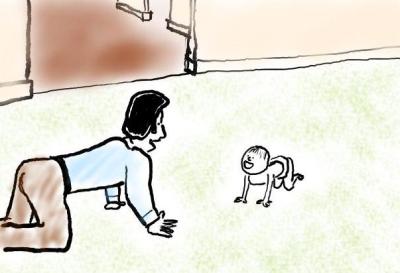
There once was a man

His name was Daddy.

He had a son

(And sometime caddy).

He helped him to grow

And have fun on the way

That’s why the son

Is a man today.
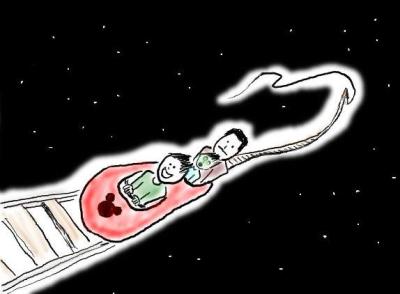
The son hopes that he

Can be like his dad

So that someday his own kids
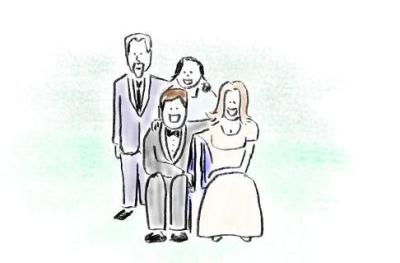
Will have one like he had.
Goodbye, 2007. I can’t say I’ll be sorry to see you go.
I was prepared to like you, but almost at once you caused my mom a lot of trouble and discomfort and finally took her from me. Then you took my dog. Meanwhile you kept busy breaking my rib, crashing my car, infecting my lungs, and dismantling my democracy. For good measure you effected the departure of some of my favorite co-workers. It’s almost as if you had a personal vendetta against me.
Well as M told James Bond in Goldfinger, and as someone should have told you twelve months ago,
This isn’t a personal vendetta, [2]007. It’s an assignment like any other. And if you can’t treat it as such, coldly and objectively, [2]008 can replace you.
Of course it wasn’t all bad. You did manage to keep my wife and children safe and sound, and we did enjoy some modest prosperity. Still, I look forward to your replacement.
[This post is participating in Joe’s Movie Corner’s Endings Blog-a-thon.]
I was going to write about the ending to The Taking of Pelham One Two Three, but Maul of America beat me to it.
So then I started thinking about other movies whose ending pays us off with a memorable, wordless facial expression like that one does (making this a sort of companion piece to my earlier post, “When words meet faces“). Warning: spoilers ahead.
The first movie like this that came to mind was Monsters, Inc. In that film, it is the job of monsters from the “monster world” to enter children’s bedrooms in the human world each night through magic doors and scare them into producing screams, which the monster world harvests for its energy. Secretly, monsters are terrified of children. One night, despite elaborate precautions, an adorable little toddler escapes into the monster world and is discovered by Sully, the champion scarer at Monsters, Inc. At first Sully is frightened of her but she soons endears herself to him. After a game of peek-a-boo, he decides to call her “Boo.” (Sully’s friend Mike is alarmed. “You’re not supposed to name it! Once you name it, you start getting attached to it!”) Amidst Boo’s pre-verbal babbling she calls him “Kitty.” He becomes protective of her and determines to return her to her bedroom, but machinations at Monsters, Inc. make this a challenge, and an adventure ensues. In the end, after helping to expose an evil plan, jail some criminals, and transform Monsters, Inc. from harvesting children’s screams to using their laughter, Sully finally bids Boo an emotional farewell and sends her back to her bedroom. Her door is put through a door-shredder.
Some time passes. Monsters, Inc. is doing better than ever now that it’s harvesting laughs instead of screams, but Sully misses Boo. One day, Sully’s friend Mike gives him a gift: Boo’s door, painstakingly reassembled from its shredded wooden fragments. Sully opens the door and tentatively peers through it. “Boo?” A more grown-up voice answers, “Kitty!” Sully’s face registers first surprise and then the most satisfying smile of delight ever animated.
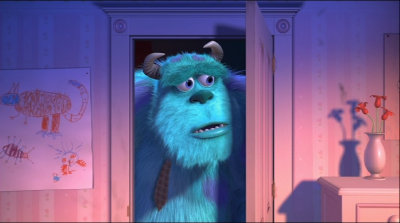
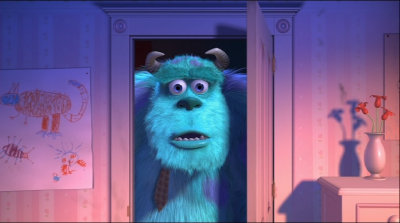
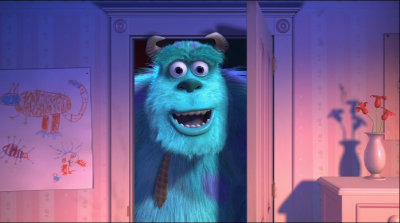
While thinking about this post, my kids watched Spider-Man 2 on DVD and I was reminded of its ending, which is also a memorable, wordless facial expression.
Peter Parker has loved Mary Jane Watson all his life, but after the events of the first Spider-Man film he realized he must not place her in danger by letting anyone know he loves her; so he rejects her. In the next film, she reluctantly becomes engaged to another man. But the events of the film lead to her discovering Spider-Man’s true identity and the real reason for Peter’s rejection; he does in fact love her. She leaves her fiancé at the altar, runs to Peter’s side, and declares her love and her intention to face danger with him. “Isn’t it time someone saved your life?”
A moment later, they hear police sirens from the street below. MJ lets Peter go catch more bad guys. He leaps from his window as Spider-Man, exultantly swinging through the concrete canyons of Manhattan. He has reconciled his personal life with his responsibilities as a superhero, which has been the “through-line” of the film.
But interestingly, the movie doesn’t end there. It shifts into a more downbeat finale, cutting back to a rueful MJ as she stands in Peter’s window, watching him recede into the distance and fretting about the future.
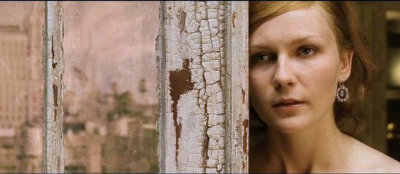
A similar but much more classic “what have I gotten myself into” ending is in The Godfather. Michael Corleone has consolidated the power of the Corleone crime family, but his wife Kay has misgivings about the man he’s becoming. She confronts him in his office about his role in the disappearance of Carlo, his brother-in-law. “Don’t ask me about my business, Kay,” Michael warns, but Kay persists, angering him.
In the world of The Godfather, women don’t matter, except in how they can be used. So it takes no effort for Michael to pretend magnanimity and lie to his wife. “Alright. This one time. This one time I’ll let you ask about my affairs.” He gives a neat and tidy answer that sets her mind at ease. As she moves to the adjoining room to fix them both a drink, some of Michael’s lieutenants arrive in his office, one of them perfunctorily closing the door on Kay, whose face shows surprise and hurt. It’s man-talk and she can never be a part of it. And catching this glimpse of Michael about to do business, she wonders if she can believe what he just told her — or indeed anything at all.
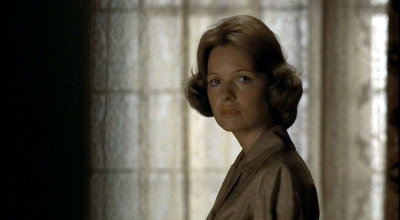
But as classic as The Godfather is, the granddaddy of rueful ambivalence is the ending of The Graduate. Benjamin Braddock, having let grownups heave him from one situation to another his whole life, has finally seized control of things himself. Overcoming many obstacles he hurries to the chapel where Elaine Robinson is about to marry another man. “Elaine! Elaine!” he shouts to her through a glass wall.
After a melee he succeeds in extracting her from the ceremony, eluding an angry mob of family and wedding guests, and herding Elaine onto a city bus, where their initial excitement at being reunited and avoiding an unwanted marriage turns to disquiet: Elaine remembering what a cad she found Benjamin to be only a short time ago; Benjamin remembering that it was not his own idea to call on Elaine in the first place, but that of another grownup. Will he ever be his own man?
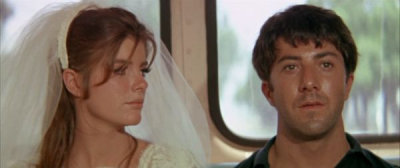
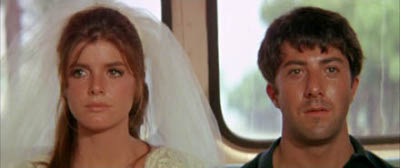
It’s just a few days until Iowa Democrats cast the first votes in the 2008 presidential primaries, so it’s time for a summary post not only about why it’s important to vote for John Edwards but also why it’s important not to vote for Obama or Hillary.
A couple of weeks ago, when I wrote my blog post about influencing the Federal Election Commission, I sent a version of it to a mailing list of old school classmates. Because my message advocated John Edwards for president, one classmate replied, “His policies sound good, but he is a phony.” Here’s what I wrote:
When I was in college, I had a few friends who were in CMU’s sizable drama program. I was never really comfortable around those folks, even though I was nominally pretty close to a couple of them. To me, the math nerd/scientist/software engineer with only rudimentary expertise in interpersonal relationships, the way they could (and often did) change personalities on a whim was disconcerting. The way they could project those personalities around a room, and sometimes seemingly right through me, was downright unnatural.
Presidential candidates are like this. They are necessarily playing a role. They are all phonies, though some are better actors than others. You can’t judge a candidate on his or her apparent personality. In the first place, it is guaranteed not to be their real personality. (Case in point: the voters who thought Bush was the one they’d prefer to have a beer with and who now suffer from a monster case of buyer’s remorse. Case in point: the wooden Al Gore of 2000, who disappeared without a trace as soon as the election was over.) And in the second place, the skills a politician uses to project an electable personality have little to do with the skills they must bring to bear as President. To judge those skills, good-sounding policies are a start. A paper trail of actual achievements aligned with the stated policies is even better, and Edwards has that too. The deal-clincher for me is his in-the-trenches experience battling monied interests on behalf of ordinary citizens — and winning.
Later in that thread I added:
However, there are still a couple of good reasons to vote for Edwards regardless of what you think of him or his specific policies. These reasons are kind of “meta” but I think they’re still valid:
- He’s clearly positioned as the progressive/populist candidate. That alone can set the tone for the next administration and for coattail Congressional races if he should win. The nationwide narrative becomes, “Americans are fed up with coroporatist politics.”
- The GOP has already attacked him a few times. Why would they? They haven’t gone after Obama or Clinton (yet) and their fundraising is in pretty poor shape; why not hold their fire until after the primaries? It’s pretty clear that the reason is the GOP wants to run against Obama or Clinton and thinks it has a chance against them, and fears Edwards. You may have seen the recent CNN poll that shows only Edwards beating all potential Republican presidential candidates, and by the widest margins. See “CNN poll: Edwards DESTROYS GOP candidates.”
To return to the idea that politicians are phonies, I coincidentally read a great quote yesterday at “Edwards HAS NO money problem!” that makes my point more concisely:
Does Edwards TRULY BELIEVE his semi-populist positions, or is he simply pandering? Who knows. But at least he is pandering TO ME, and not the lobbyists for banks, insurance companies, and defense contractors!
Click here to see my other blog posts about John Edwards.
Here’s another person’s eloquent endorsement of Edwards:
I didn’t start as a fan of John Edwards and at first dismissed him as just another light weight pretty boy politician trying to do his finest JFK impersonation and the media seemed to constantly project that image of him as well.
But as I watched the health care debate unfold and became aware of John Edwards, I could see he was driving the policy debate on the issue. Over time I watched him drive every issue of this campaign one after another.
I watched him not only make proposals but give detailed plans on how he intended to accomplish what he was proposing. I read all of the experts as they vetted his plans and crunched the numbers and watched his support grow among the professionals in all of the fields that he was making proposals in; on health care reform, economics and fair trade, tax reform to reward work, protecting labor’s right to organize unions, and ending the war in Iraq.
[…]
All the while John’s plans got more detailed and Hillary’s plans and Obama’s plans seemed to lag far behind and when they did talk details, what they were proposing seemed to be a version of what the Edwards plan was. I listened to the parsing and heard statements of commitment only to be followed by qualifiers like, “I didn’t mean coverage, I meant access.”
Then John Edwards issued his plans in writing and I realized just how really serious about everything he is.
Here’s why not to vote for Barack Obama:
Following close on the heels of Obama endorsements from the neoconservative Weekly Standard and the conservative Republican newspaper the Sioux City Journal, yet another conservative Republican newspaper the Dallas Morning News has now rushed to support Obama.
[…]
Why do these outlets and media who have fawned over Bush in the past like Obama so much?
Could it be because his positions on the crucial issues of health care and Social Security are closer to those of the Republican right wing than those of any other Democratic contender?
[…]
Or maybe it’s just that these Republicans just want the Democrats to nominate someone they know will be easy to best.
And here’s why not to vote for Hillary Clinton:
In seeking the Democratic presidential nomination, Mrs. Clinton lays claim to two traits nearly every day: strength and experience. But as the junior senator from New York, she has few significant legislative accomplishments to her name. She has cast herself, instead, as a first lady like no other: a full partner to her husband in his administration, and, she says, all the stronger and more experienced for her “eight years with a front-row seat on history.”
But during those two terms in the White House, Mrs. Clinton did not hold a security clearance. She did not attend National Security Council meetings. She was not given a copy of the president’s daily intelligence briefing. She did not assert herself on the crises in Somalia, Haiti and Rwanda.
And during one of President Bill Clinton’s major tests on terrorism, whether to bomb Afghanistan and Sudan in 1998, Mrs. Clinton was barely speaking to her husband, let alone advising him, as the Lewinsky scandal sizzled.
I was all prepared to be disinterested in the HBO series Rome, the first disc of which arrived last week from Netflix, but I had to give it a try because everyone who mattered said I did.
Of course the first episode was terrific and I was hooked, dammit. This brings to six the number of current or recent TV series that I must follow on DVD, the others being Prison Break, Lost, Battlestar Galactica, Weeds, and the final season-and-a-half of The Sopranos, which I still haven’t seen (but have had spoiled). I also have yet to sample Dexter or Big Love, both of which sound like they also have the potential to hook me. Thank goodness I lost interest in Veronica Mars and Deadwood and never even liked Heroes.
Anyway, back to the first episode of Rome. As with many first-tier TV productions these days it had outstanding writing, performances, and production values, but when I think about the show, the one thing I keep coming back to is Polly Walker’s nipples.
 In her introductory scene as Atia, scheming niece of Julius Caesar, she is astride her lover Timon, both of them oblivious to the slaves and attendants who surround them at a discreet distance as they hump their way to climax. Prominently on display in this scene are Atia’s (that is to say Polly Walker’s) erect and, I have to say, impressive nipples.
In her introductory scene as Atia, scheming niece of Julius Caesar, she is astride her lover Timon, both of them oblivious to the slaves and attendants who surround them at a discreet distance as they hump their way to climax. Prominently on display in this scene are Atia’s (that is to say Polly Walker’s) erect and, I have to say, impressive nipples.
Now, I’ve been around a bit. I’ve seen my share of erect nipples, in person and in pictures. I’ve seen plenty of sex in film, both real and simulated. I would not have expected a detail like this could so captivate me this late in my sexual life.
Yet somehow I can’t escape the image. And I doubt I’m alone in this. My tastes are extremely conventional, after all; and as Howard Hughes says in The Aviator, “Who doesn’t like tits?”
That means there is a good chance that the success enjoyed to date by Rome, and by Polly Walker herself, may be attributable in large part to the shrewdly early viewer-hooking use of those tiny but strangely fascinating anatomical items.
Well, it wouldn’t be the first time that nipples have made a career…
